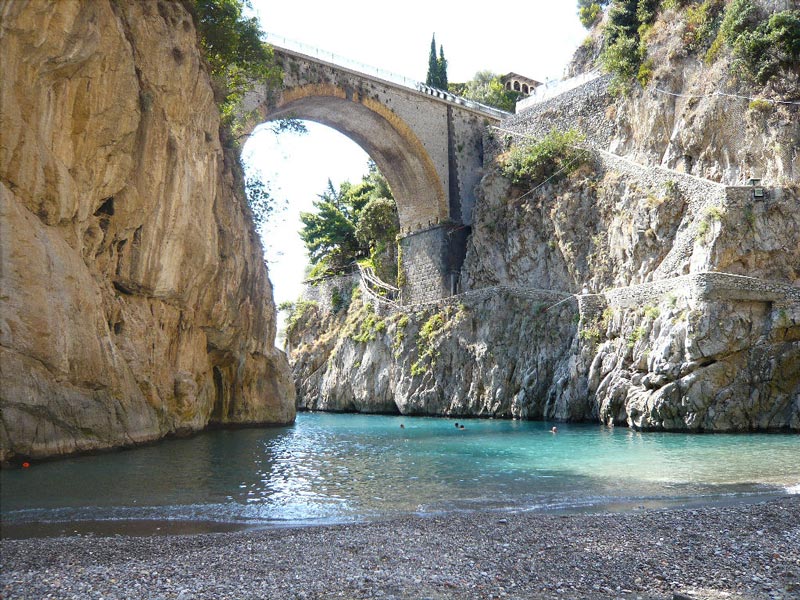What to see and where to go in Ravello


If you think about Amalfi Coast the first thing that comes to mind is the landscape: beautiful sea and mountains that dominate it. Then you think about the small cities, full of history and traditions, like Amalfi, Vietri Sul Mare, Ravello, Positano. But what about the hinterland? We already wrote about what to see in Amalfi Coast in a week end here, but now it’s time to leave the coast and move in the hinterland, a place even more beautiful.
What makes Furore charming and famous is the fiord, that represents Amalfi Coast landscape in the best way. Furore is a “halfway” city: there is a small beach, a harbor and the “lower” part of the city is on the sea. But there is also the “higher” part of Furore, which is also called “the city in the land that doesn’t exist”, because the houses are built on the mountainside in a scattered way and it doesn’t seem to be a real city, but a group of houses instead. If you focus on the higher city, you can find a lot of trekking paths, famous for their names: Amore (Love), Abu Tabela, Nido di Corvo (Crow’s Nest), Pipistrelli Pazzi (Crazy Bats).

Scala, not far from Ravello, is completely in the hinterland (so there is no sea!). Scala has been under Amalfi control for a long time and its city center will leave you breathless. The buildings are decorated with tuff and clay and everything is surrounded by woods, where the most common tree is the Chestnut one (a famous festival in Scala is the “Chestnut Festival”). At the center of the city there is the Cathedral, built in 11th century in Saint Lorenzo’s honor. Don’t miss the beautiful floor of the church, covered with neapolitan pottery. Every year takes place the reconstruction of a medieval wedding happened in Scala between Antonio Coppola, nobleman from Scala, and Matinella Rufolo, daughter of the most important family of Ravello. The wedding took place in 14th century with the purpose to bring peace between the cities. The bride leaves her home (Villa Rufolo) in Ravello and walks along the bridge over Dragone river, where she meets her future husband. Then, they reaches the Cathedral together, where the Bishop marry them. After the cerimony, the party takes place.

Tramonti is a real mountain village. It rises in the only valley of Amalfi Coast. Far from the fishers and from the traditions of the coast, this is a city where the lifestyle never changed from the past. If you want to go deep into the agricultural tradition, you can follow the paths of the cows, going through 13 villages in the mountains and tasting milk and cheeses. A lot of archeological discoveries has been made since the 80s: the most important one is the Countryside Villa, in the village of Polvica, made by two structures one on the other. The most ancient one is from the I centrury B.C.

The main character of the entire Amalfi Coast hinterland is the Regional Park of the Lattari Mountains. This area is 160 Km2 large and embraces all the peninsula of Sorrento and Amalfi. Due to its characteristics, this could be the land of the contrasts: man and nature, sea and mountain, history and modernity. Otherwise, you can see it as the land of diversity, where everything coexist harmoniously in a unique ensemble of beauty.
The vegetal landscape of Lattari Mountains can be divided in three groups: on the most exposed sides predominate carob trees and olive trees; in the middle zone there is shrubbery like arbutus and heather; at higher altitudes you can find more chestnut trees, alders, ashes and beeches. There also a lot of citrus trees and vineyards, planted by man during the centuries using a lot of terracing, that made the landscape as characteristic as it is today.

For any further information about itineraries and endemic species of the Lattari Mountains, please visit the official site.